Beautiful Aliens: KLÁRA HOSNEDLOVÁ
|ESTELLE HOY
On May 1, KLÁRA HOSNEDLOVÁ's monumental exhibition for the CHANEL Commission in the grand hall of Hamburger Bahnhof will open to the public. embrace is her largest sculptural scene to date and includes a series of tapestries up to nine meters high.
On the occasion of its opening, we're revisiting ESTELLE HOY's essay on the artist's work for 032c Issue #43, also featuring a shoot by photographer VITALI GELWICH and our fashion director RAS BARTRAM.
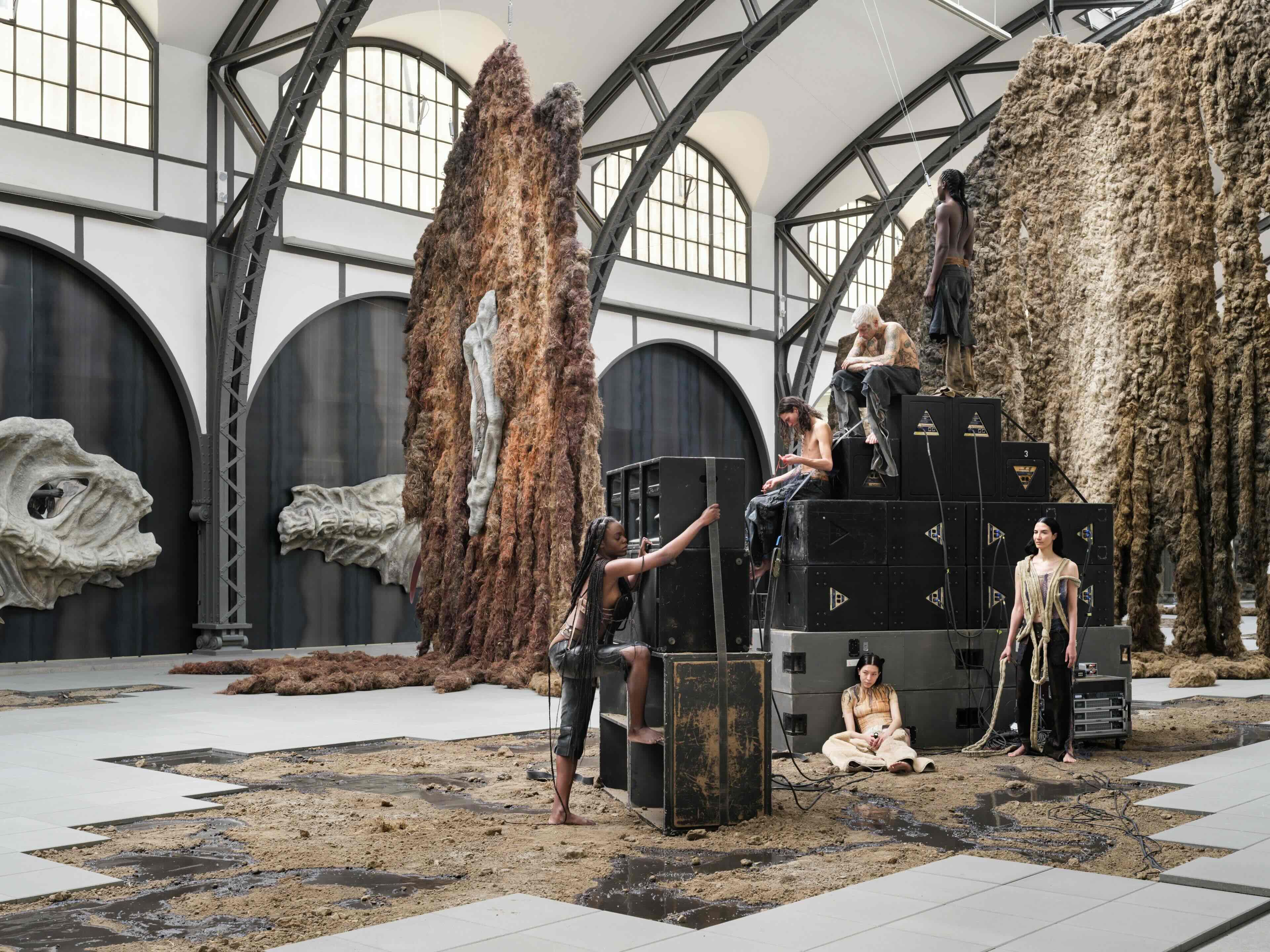
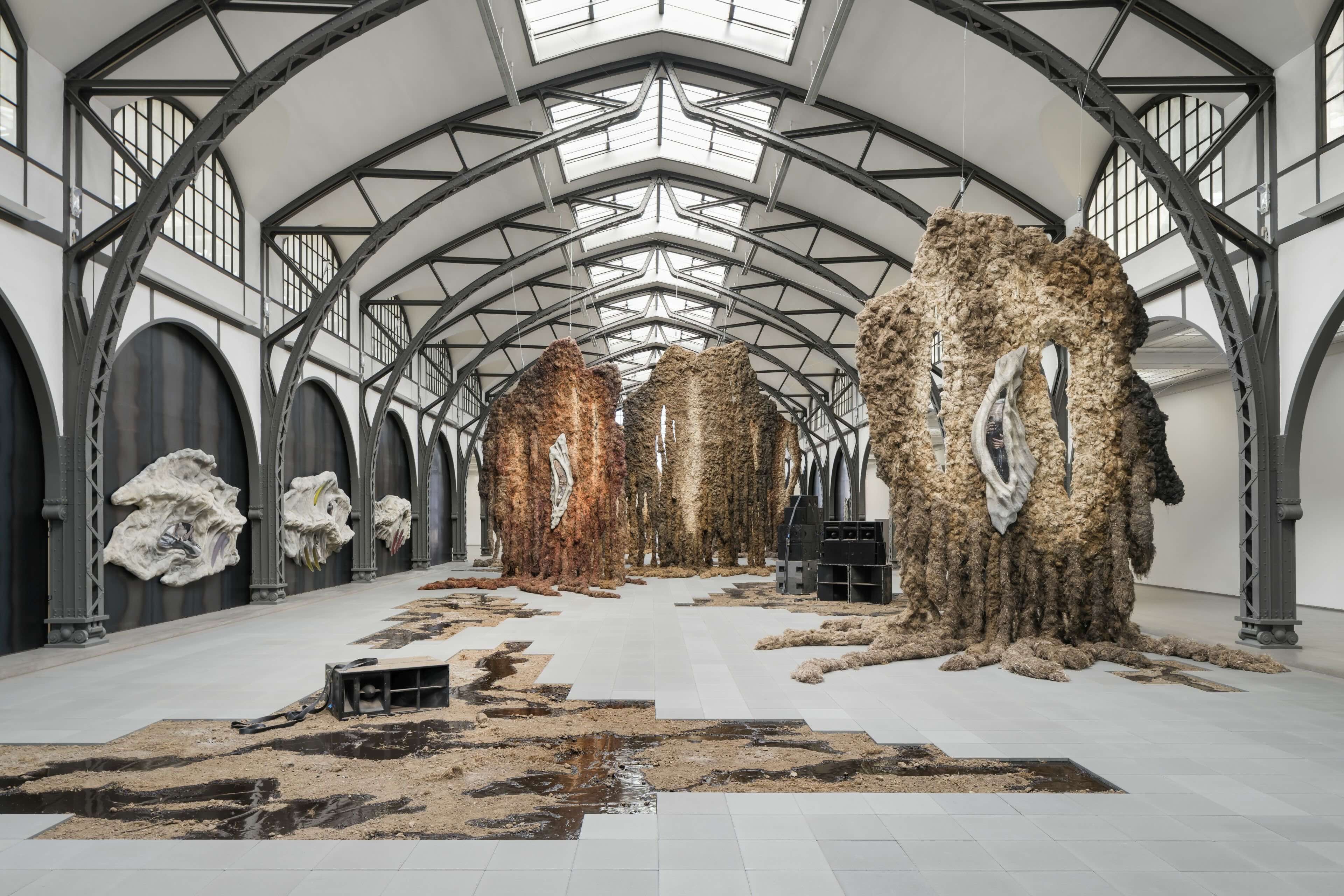
Klára Hosnedlová, CHANEL Commission: Klára Hosnedlová. embrace, 2025, Installation view Hamburger Bahnhof – National Gallery of Contemporary Art, May 1 – October 26, 2025 © Courtesy Artist, Kraupa-Tuskany Zeidler, White Cube / National Gallery – National Museums in Berlin, Zdeněk Porcal – Studio Flusser
The work of artist KLARÁ HOSNEDLOVÁ encompasses sculpture, painting, installation, and performance, all of which she imbues with nostalgia and dreamlike elements. In her exhibitions, the Czech native and her performers often inhabit utopian sites which do over our current reality while also referencing the Modernist and Brutalist architectures of East Central Europe.
In this lyrical essay from our Issue #43, writer ESTELLE HOY visits the alien worlds of Hosnedlová and asks: what does it mean to be possessed by the practice of another and make yourself at home?
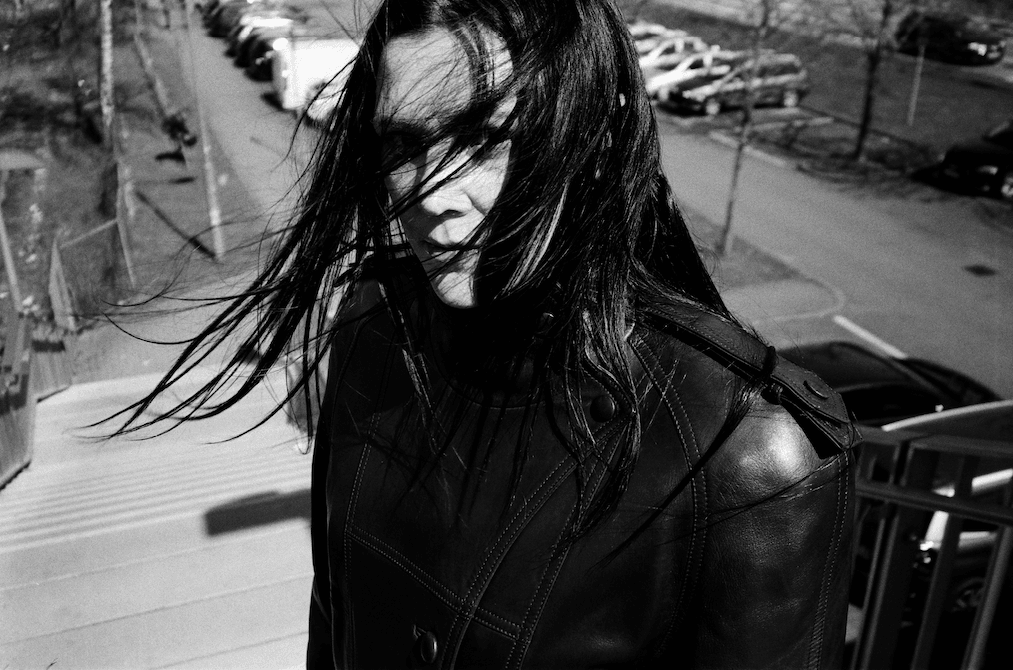
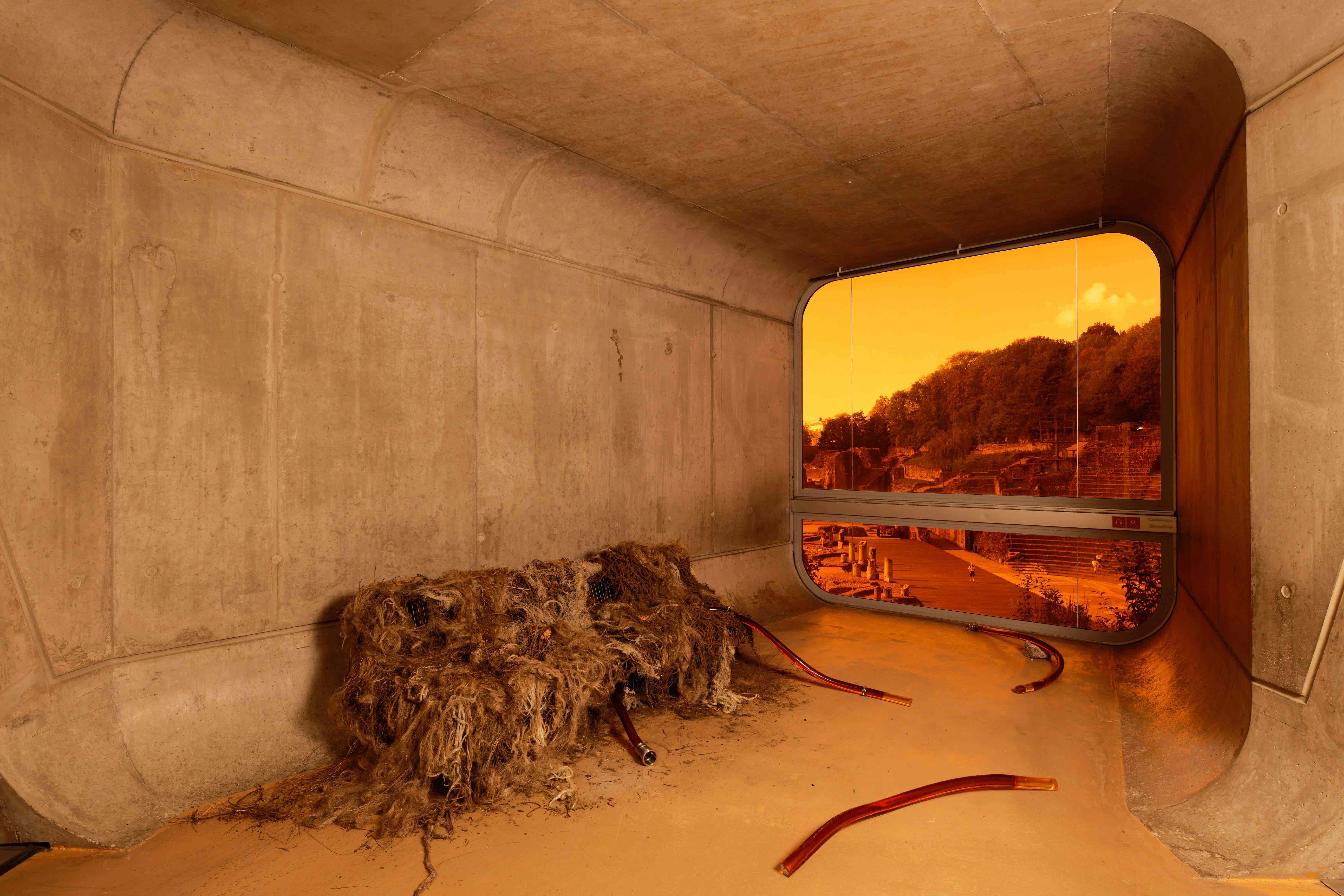
“With an obscure hesitation one steps into the day and its frame and its costume. Between the puzzlement and its summary abandonment, between the folds of waking consciousness and their subsequent limitation, is a possible city. Solitude, hotels, aging, love, hormones, alcohol, illness – these drifting experiences open it a little. Sometimes prolonged reading holds it ajar. Another’s style of consciousness inflects one’s own; an odd syntactic manner, a texture of embellishment, pause. A new mode of rest. I can feel physiologically haunted by a style.”
– Lisa Robertson
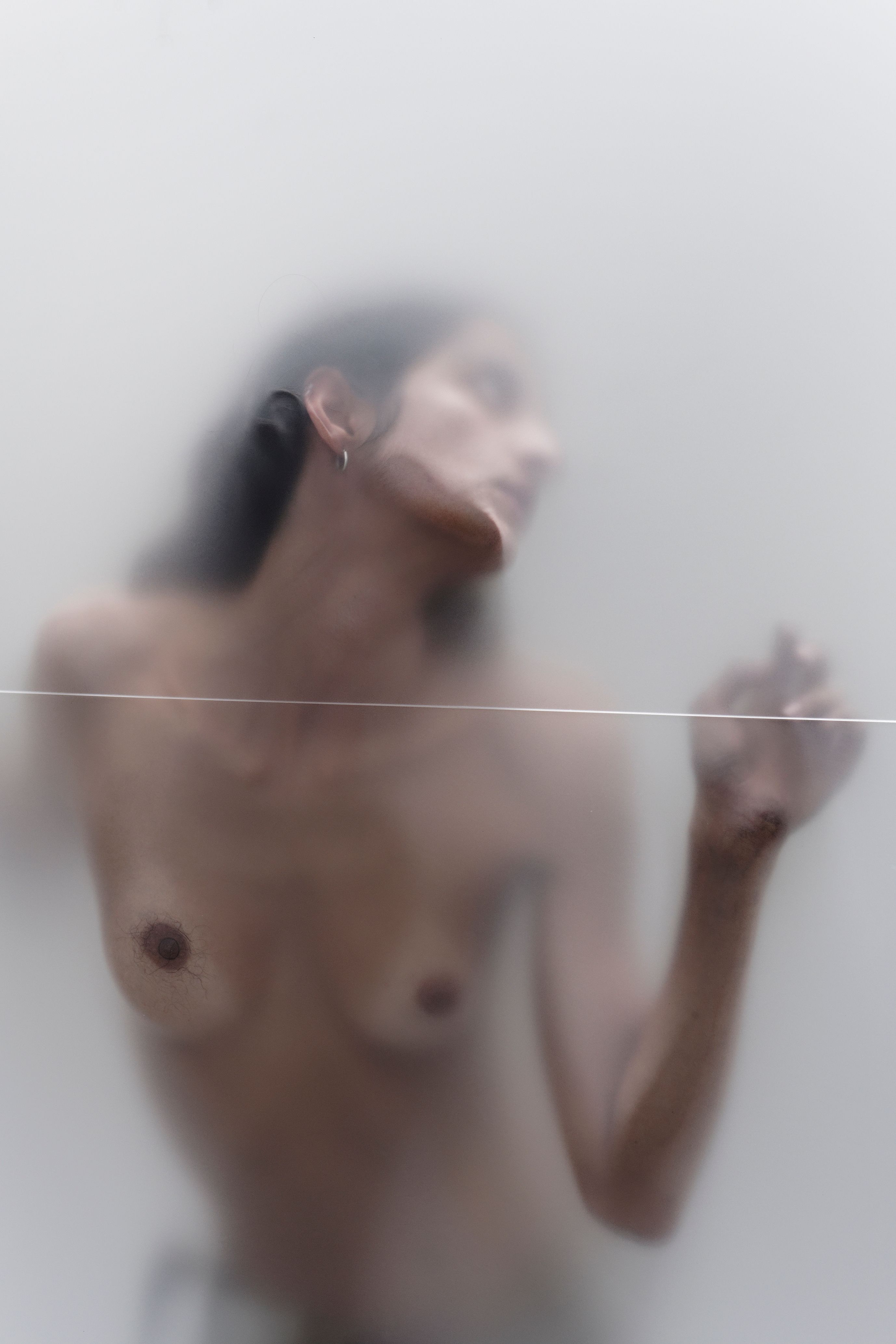
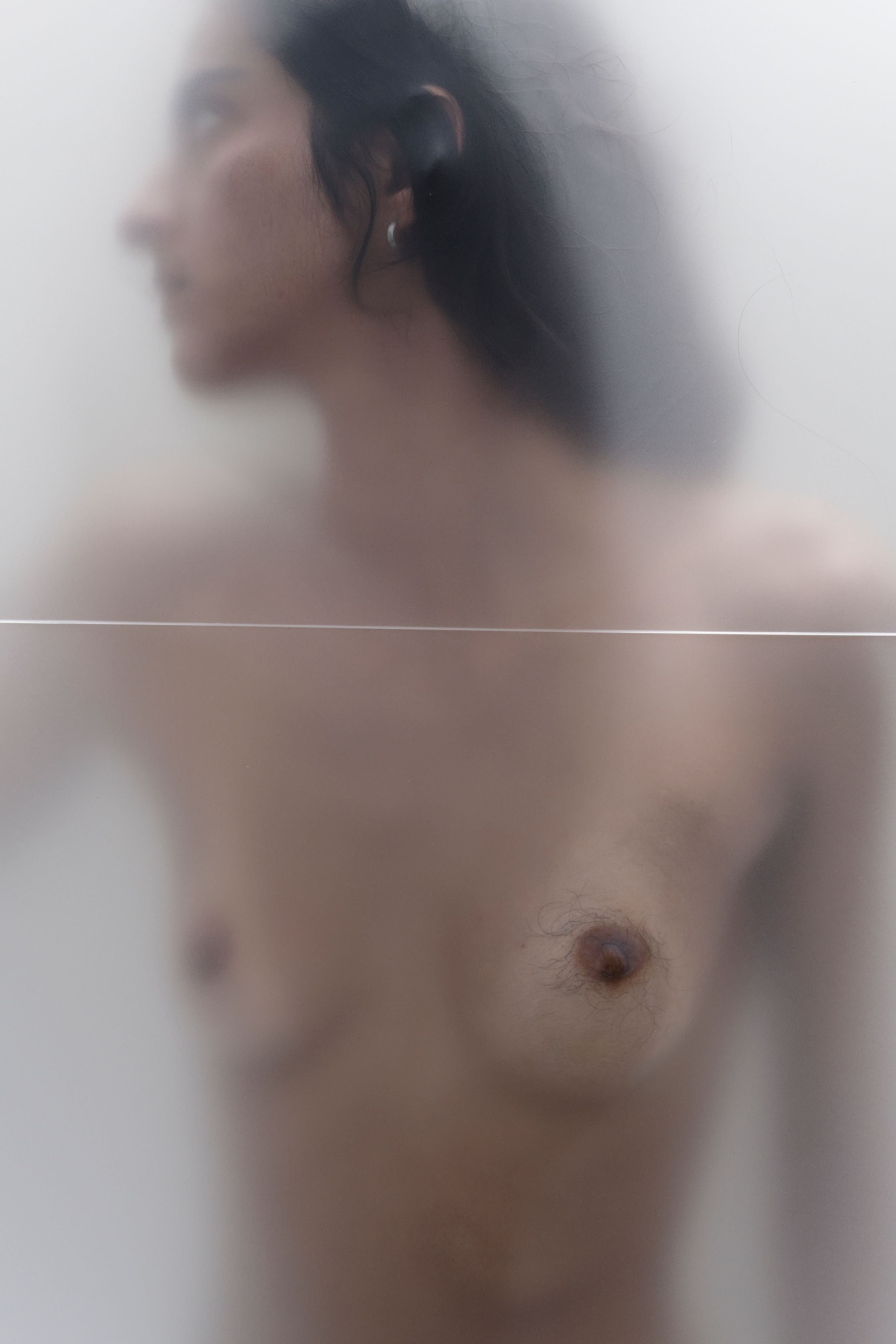
Now some weeks have passed since I’ve seen an alien, which is the greatest sadness. A visit to Czech artist Klára Hosnedlová’s Berlin studio is an otherworldly walkthrough, a puzzling city on Mars where everything seems fair. In Margiela duck-webbed boots, we tiptoe over cement floors and expect that fragile, quixotic entities will fasten themselves onto our eroding bones, eyes, and flesh; we leave in her studio a part of ourselves that we will never get back. Hosnedlová is a celestial artist insisting upon the coy, extraterrestrial futures we must make if we are to go on living. In her work, embroidery, performance, installation, and architecture knit together with handblown glass, silk thread, and alien bodies that permit us to reorganize ourselves – a pinky promise she takes quite seriously. Transfigurations of architectural utopias, rising like Botticelli’s Venus from seashells, partially clothed, attaching avant-garde fashion to the skin, mimicking barnacles or phosphorescent scales, giving witness to a body whose primary concern is to cocoon itself in metamorphic mimicry. The rewards of mimicry are finding empathetic commonalities between ourselves, the environment, and others. Hosnedlová’s anthems of ready-to-wear mesh, partial skin-hide, Spring/Summer collections, and dreamy McQueen oyster dress swoons pursue positive, blending rapport. Camouflaging oneself in the natural world amid the act of self-preservation is a farsighted endeavor. Hosnedlová creates utopian worlds to see whether other people feel the same, whether other humans look to fabricate clothes, forms, cities, and tunnels as escape routes that chase more palatable realities. She wants to find out if what she creates is familiar. It isn’t.
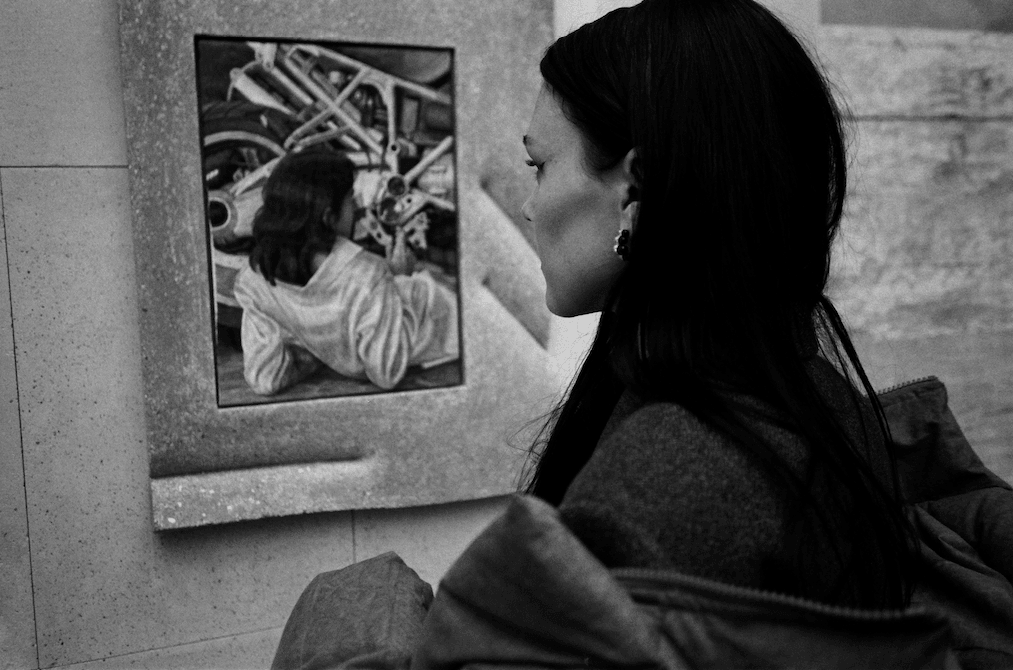
The surprise of aliens is that it doesn’t matter whether they exist. Regardless of whether other worlds are out there is inconsequential to Hosnedlová, because her pursuit is to make her own planets and narratives, so she has no need to hold back. Picking figs out of season in her series “Nest” (2020), she embroiders autopoietic processes in silk thread paintings. Acting out in embroidery isn’t something she formally trained in, nor did she seek out professional advice from the lost organza women of Damascus perfumed in jasmine and hibiscus tea. Has a dilettante embroiderer done any work? The most of all, actually. Despite being an amateur, she threads polished, hyperreal “paintings” in masterly fashion, with cautious intuition, a loop-de-loop of artistic ambition pursuing the seldom-frequented philosophical process of s l o w n e s s . [Pause] Favoring dedication, prolongment, and the inebriated temperament of snails, she leaves the silver trail of a slug that knows its own business and not much else, creating something meditative, more sympathetic to the present. It’s a fine action to create futuristic artwork without looking too far into the future – silk filaments that estrange us to our aging selves. Without wanting too much to thread together a fixed knowledge of herself, she begins the process of hooping fibrils with careful attention to symbiosis and assailability. She frames a picture of a haunted hairless cat on the torso of a person wearing a Lemaire-like jacket, its pallid origami folds cut on the bias. Weighed down in rose-gold signet rings and necklaces, an earring stud backed by a butterfly clip, the human lifts the Sphinx in mutual concession with large, assuring hands as the seas of gravity pull down. A cat born of genetic mutation, searching for comfort in the arms of an entirely different species, its lemon eyes bulging out coyly, in partiality even; a disfigured creature utterly aware of its abnormality and divergent encounters with other kinds: dreamy mutants are Hosnedlová’s specialty.
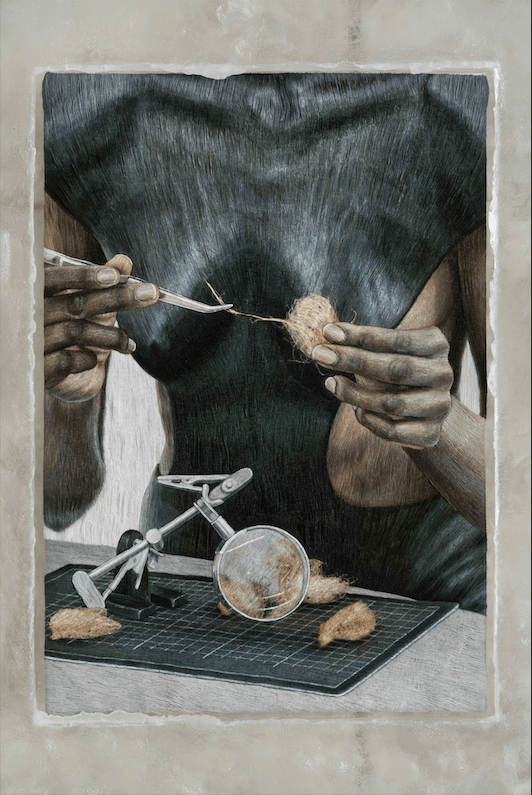
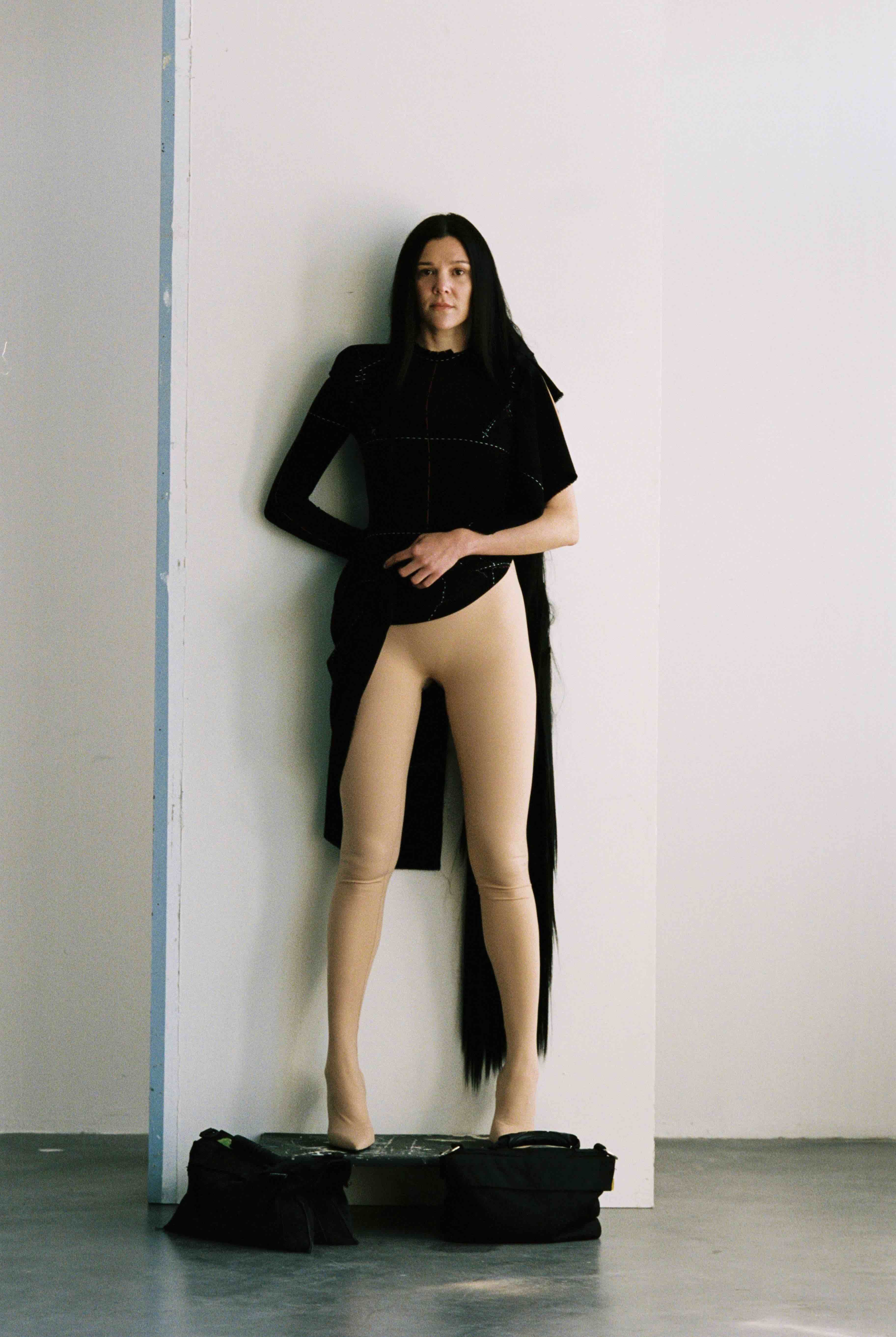
Blistered hazel glass, wall sculptures, and knitted fibers transport the room into a distant, ethereal city as sci-fi performers leave the nest, reconfiguring the gallery in textures of embellishment. Black leather corsets fasten around the performers, cut up in triangular slithers that expose their bare flesh to the elements. Another performer wears leather pants and a finely meshed top, diaphanous fabric in aqua and sand swirls; their delicate oceanic foam clings to languid forms absent-mindedly. Seafoam has a way of forgetting itself. Futuristic, puzzling style and bodies that move in the space, each in their dignity of movement and limitations – the skin of sliced-up leather can protect only so much. It’s this same vulnerability suffered by fur-poor cats, abandoned by the armor of hair shafts whose purpose is to protect flesh and fend off microscopic foreign matters. Little alien cells ravish each performer; limbs and lightweight necks covered by thin, eggshell cloth, sulfur pools, and light material-neglect, exposing the body to potential dereliction. So why choose to be defenseless? Hosnedlová embellishes the idea that, despite subsequent limitations, minor cuts of subjection, and artistic susceptibility, you can find a mode of rest, creating hypothermic cities, planets, and flickers of motel light regardless. Scrap that: because of. The flesh is weak, but the spirit is willing. Drifting in and out of consciousness, mercenary Hosnedlová births a phantasmagoric city on Venus or Mars that squanders aesthetic precision: it’s annoyingly haunting, impossible, possible, drab, mesmeric, and glittery, simultaneously. She knows how to get under our skin. Crawling beneath the epidermis, she peels it back, betraying the smokescreen of human equilibrium, freezing out the dangers of sleepy quiescence and self-stagnation. She handles the perils of hibernation and frostbite with kid gloves and the tenderness of wolves.
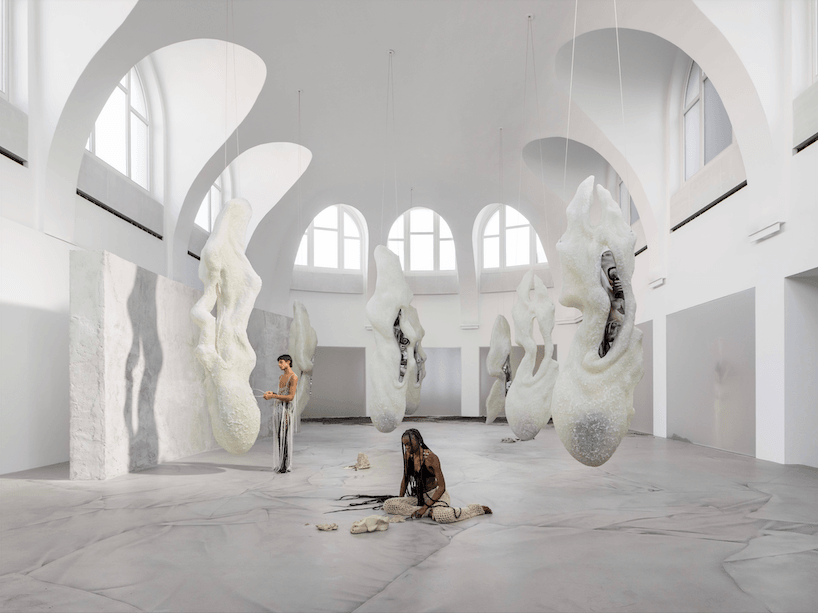
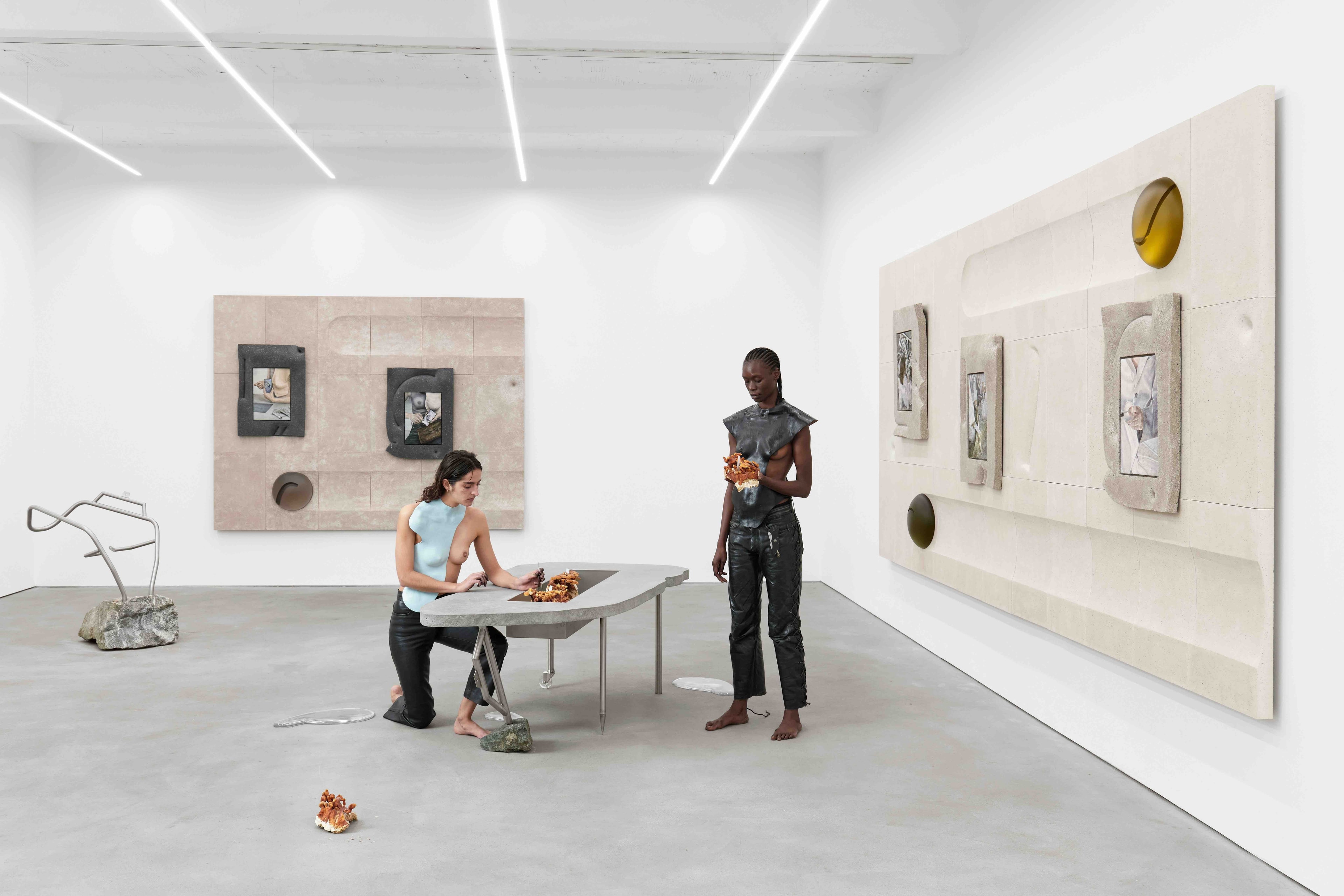
But what howls the most is her fidelity to sway into the mutinous landscape of infinitude. (An honorable epithet.) She’s not afraid of reorganizing immeasurability. In her 2023 exhibition “To Infinity,” at the Kestner Gesellschaft gallery, she sheds her scales, opens her gills, and creates a world of belonging with all the permissive bells and whistles. Dropping from the ceiling are large, nebulous incubators, globules that drip from the heavens in puddles, an opaque chrysalis improving on the “true” reality we supposedly have. Must we fear lesser truths? What if we focused less on what’s real and instead created what we want to be real? Peculiar encounters with lilac breasts and wine, snakeskins shed, moth pupae, a siren’s call under the glow of moonbeams and fishermen’s nets, clearer than any bell. “To Infinity” walks up to fragmented, post-industrial worlds at the brink of exhaustion and burns bridges with austere Brutalist architecture in a fit of rage and derision. She designs, instead, transcendental structures for people in the weakest position, those that may or may not exist in the tunnels and bunkers below, raising them in materiality that envisages the immaterial. Paradisical worlds, otherworldly Edens, are every bit better than the “Real.” Hosnedlová’s irreversible course shovels the concerns of separate-ness, half-sleeps against walls, fishtail braids, fashion fading, and timeliness of the corporeal: our bodies, their thickness, their disappearing, their reluctance. Standing in sunshowers, rejoicing in her own self-contempt and the swirling scarves of dissolution, she questions the pathos of austerity and frameworks vanishing. Brutal architecture fizzles and dissolves into something less brutal: a hotel-gallery with rotating doors, ushering in every streetwalker diplomatically, unjudged, uncensored, unmilitarized.
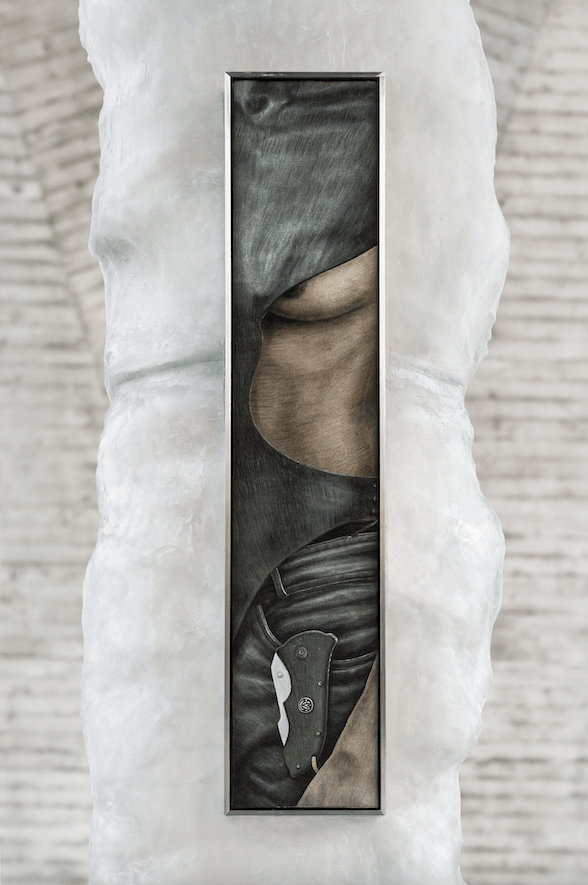
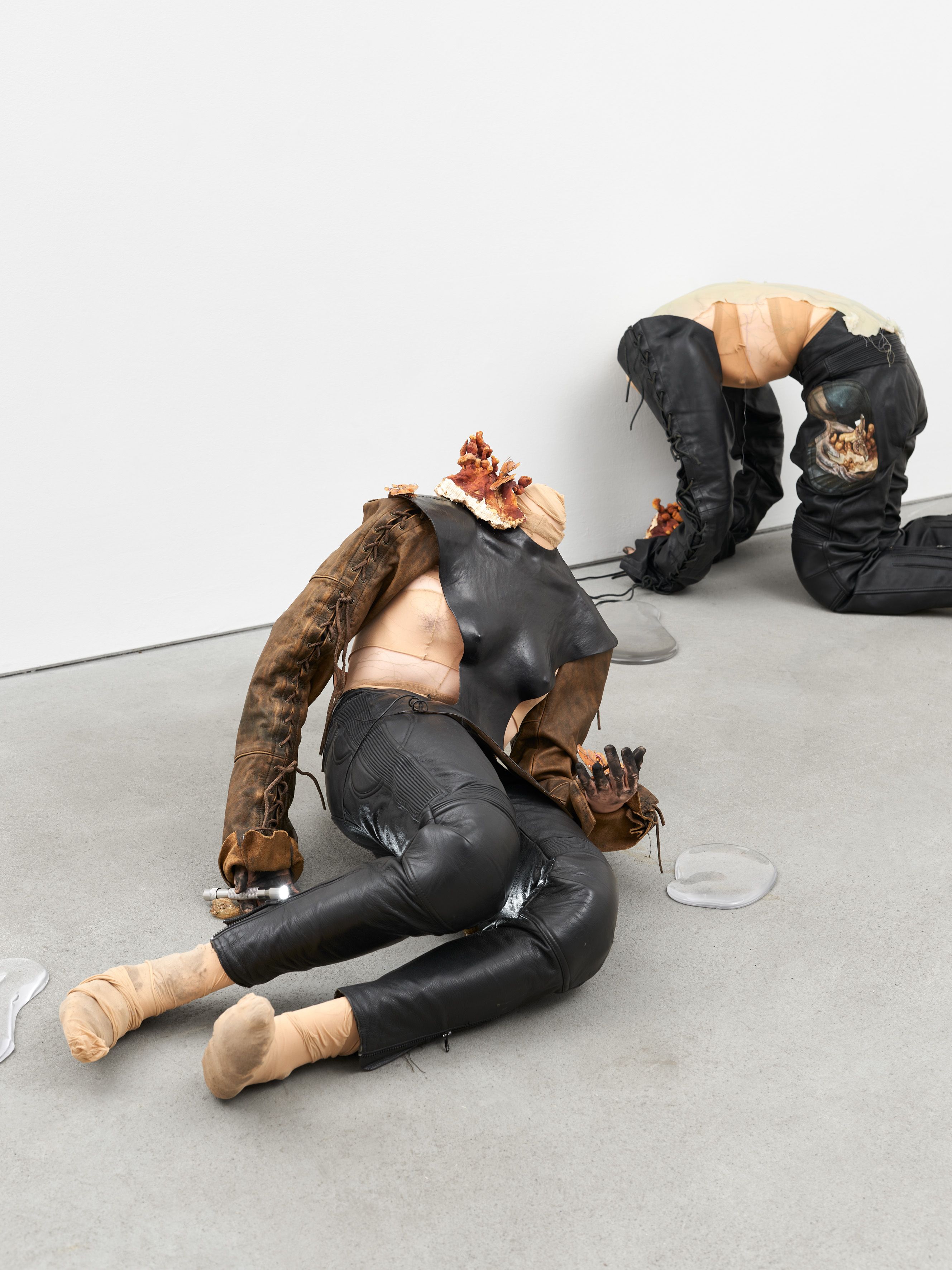
Her freaky console of insanity is not attested elsewhere, and certainly not by the performers swimming in the space draped in mermaid scales, breathing the vapor of turquoise quills, sequins, and fumes of looms. She casts fishing nets and dreamy whale tongues over the legs of people she wants to transmute, herself included; she’s not very interested in staying human. Metamorphic creatures from the sea or other planets roam slowly, bronze-cast gods or blooming Hans Christian Andersen fuliginous mermaids, standing in odd postures – glacial flowers in evolution. The artist defaces an entire categorization, a human vandal, hatching aquamarine Martians trapped aboveground in suspended duration. She’s surrealistically busy waking herself up 47 times an hour, stringing blobs of scaffolding, caramelized seaweed, and puritanical hope to house the untouchables, the political “aliens” among us. Our fear of the Other is a catastrophic machine. Hers is not a pattern of helping humans to feel a sense of belonging to their current environment, so much as a complete do-over, an obscure, hesitating reiteration that explains a universe where nobody feels alien. From the very beginning and throughout this whole artistic affair, we had the privilege of knowing what we all already know: curious encounters with the foreign mark the path to inclusion.
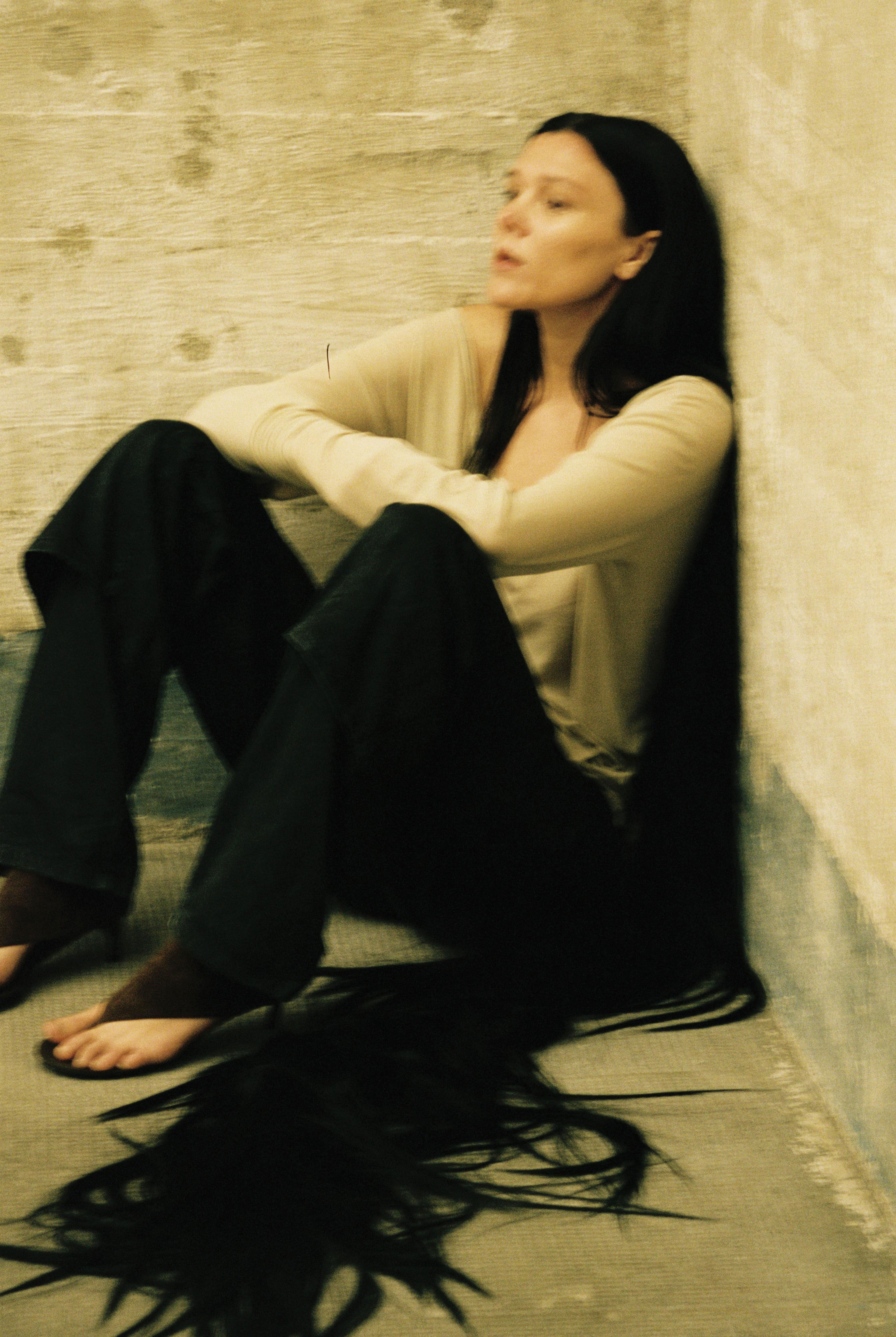
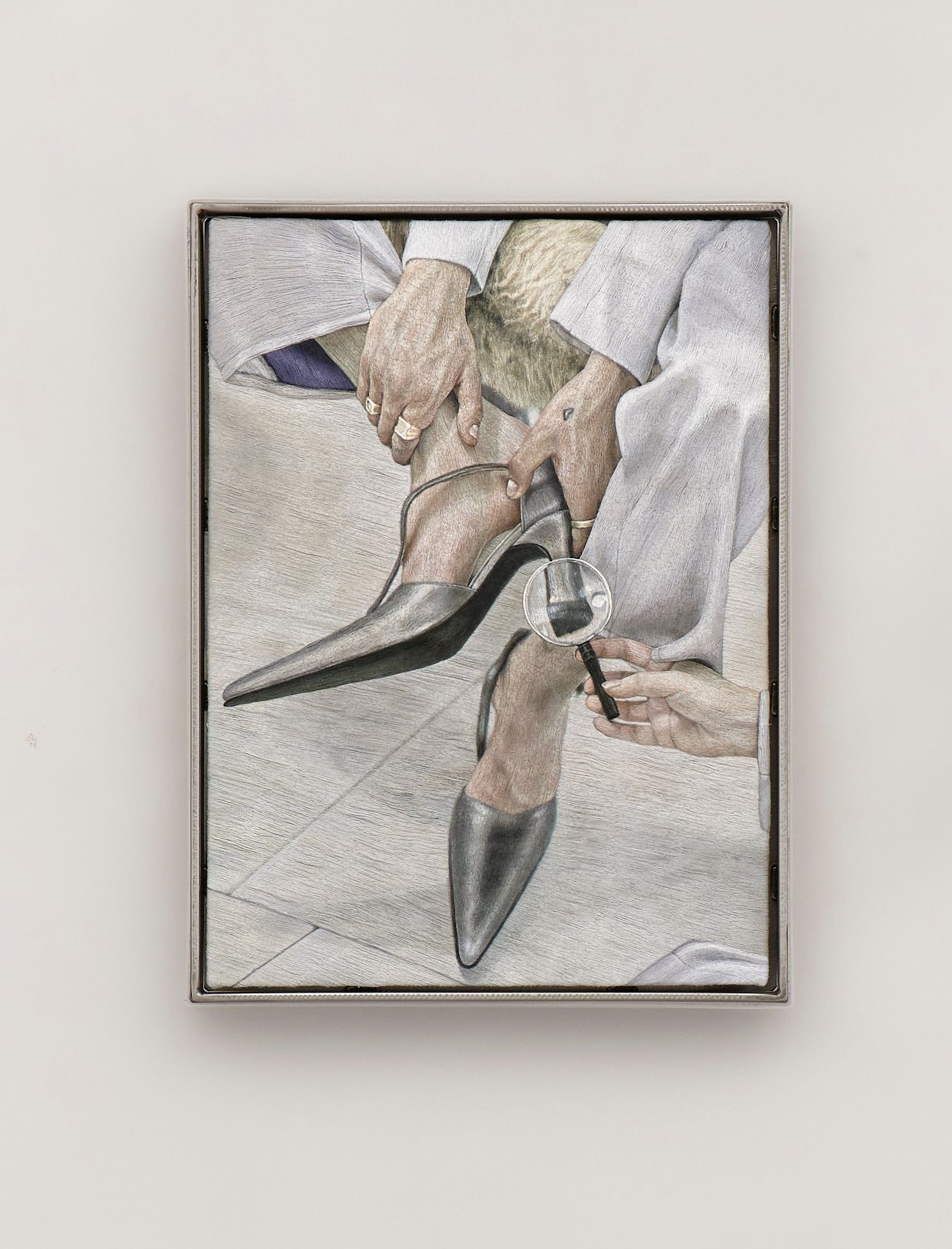
Alien worlds are not an exact science, and Hosnedlová never intended them to be. Smearing Vaseline on our eyes, she helps us witness something murky about ourselves: the unfamiliar is familiar until we make the unfamiliar unfamiliar.
Her style of consciousness inflects one’s own; incorrect fashion syntax, textures of embellishment, alien indoctrination, and ghostly, embroidered pause. The alien is not lasting; if we dare to become savagely uncomfortable and birth worlds from our unconscious, where all those who are fragile, dressed or undressed, deteriorating, alone, or surrounded, belong. Today we write of the experiences she creates, the abalone door she holds ajar to the sleepy side of utopia, a wintery Narnia dressed in cloud cover, glassy chandeliers, and Balenciagian leather, insisting that abstract notions can become a reality by familiarizing ourselves with ourselves. Stranger things have happened. Dystopian regimes exist, inhumanity persists, and bluing flesh will be exposed to trials and intrusive elements despite all of their camouflaged incarnations. Undeterred, Klára Hosnedlová steps into the day; its frames, designs, and costumes shape an otherworldly utopia, a brave new world, young and daring, composing a cosmos for every beautiful alien. This isn’t even her final form.
Credits
- Text: ESTELLE HOY
- Photography: VITALI GELWICH
- Fashion: RAS BARTRAM
- Talent/Artist: KLARA HOSNEDLOVÁ
- Hair: NORIKO TAKAYAMA
- Makeup: DENNIS BRANDT
- Production: STUPID STUDIOS
- Producer: MINA AICHHORN
- First Photography Assistant: MINA AICHHORN
- Second Photography Assistant: LEONI - SOPHIE RIEDEL
- Fashion Assistant: LUCAS AVID HÜBNER
Related Content
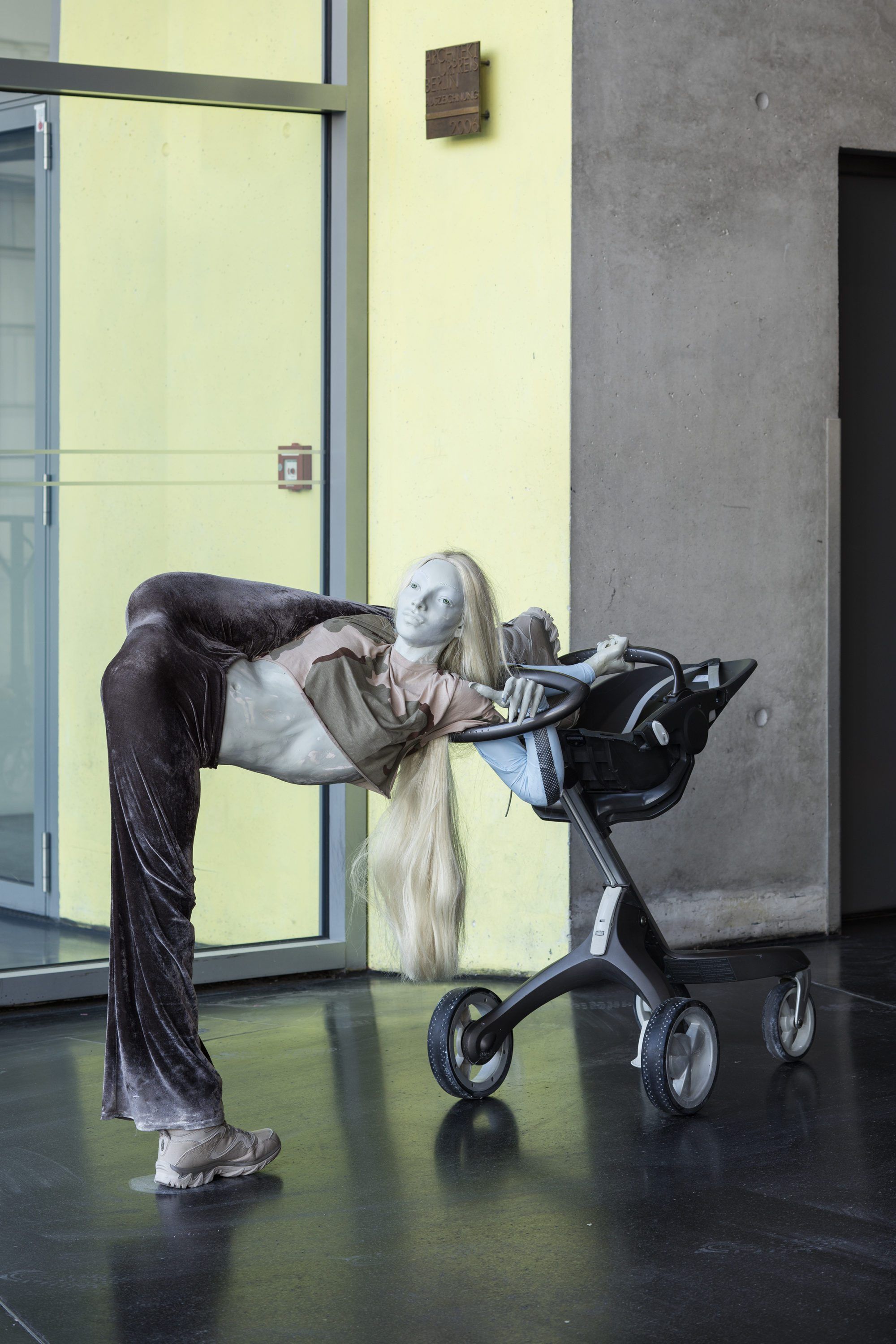
Twisted Femmes: ANNA UDDENBERG’s Uncompromising Sculptures
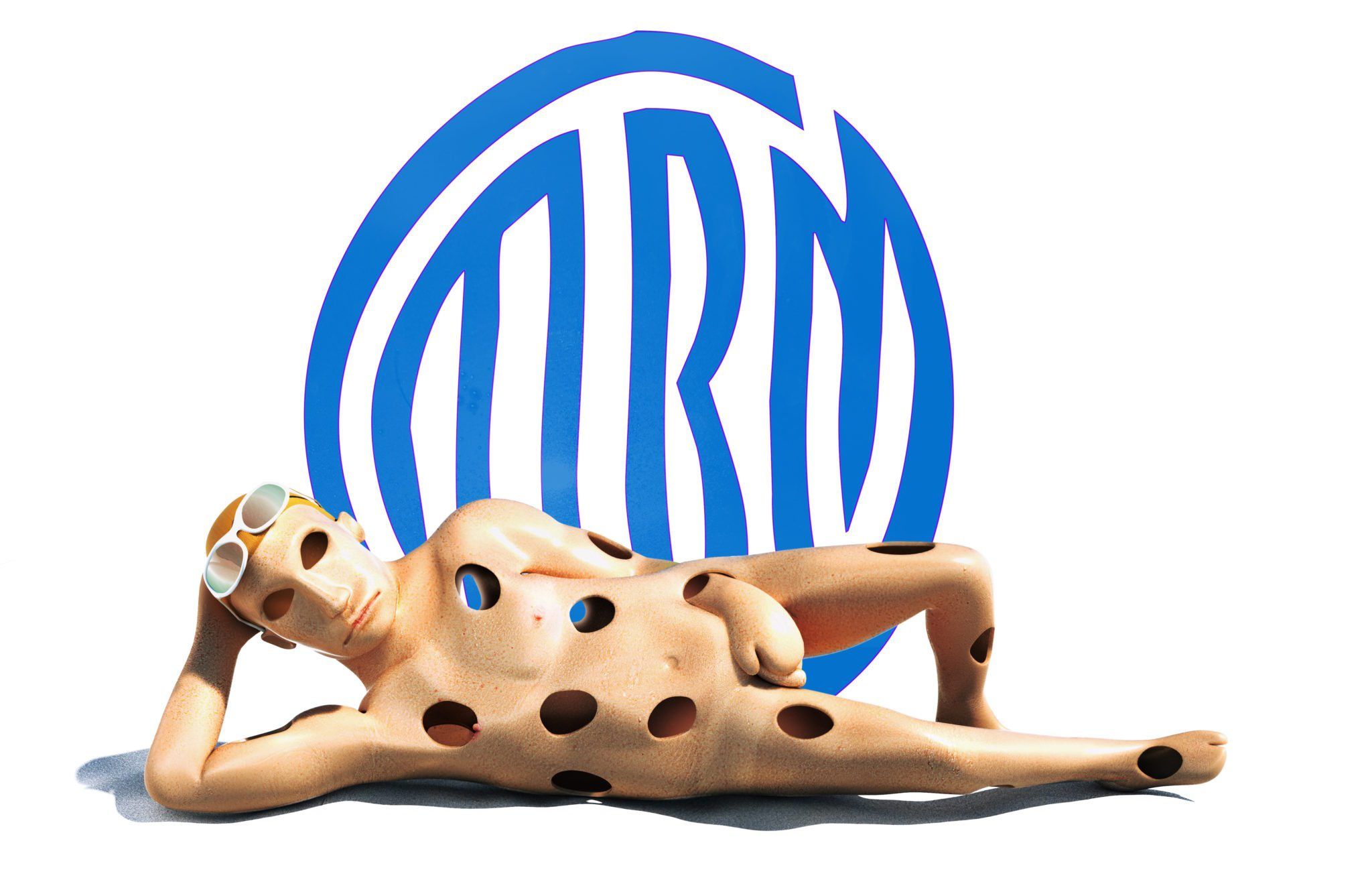
Artist BJARNE MELGAARD’s Demented SoHo Yard Sale Resurrects a Stolen Sculpture
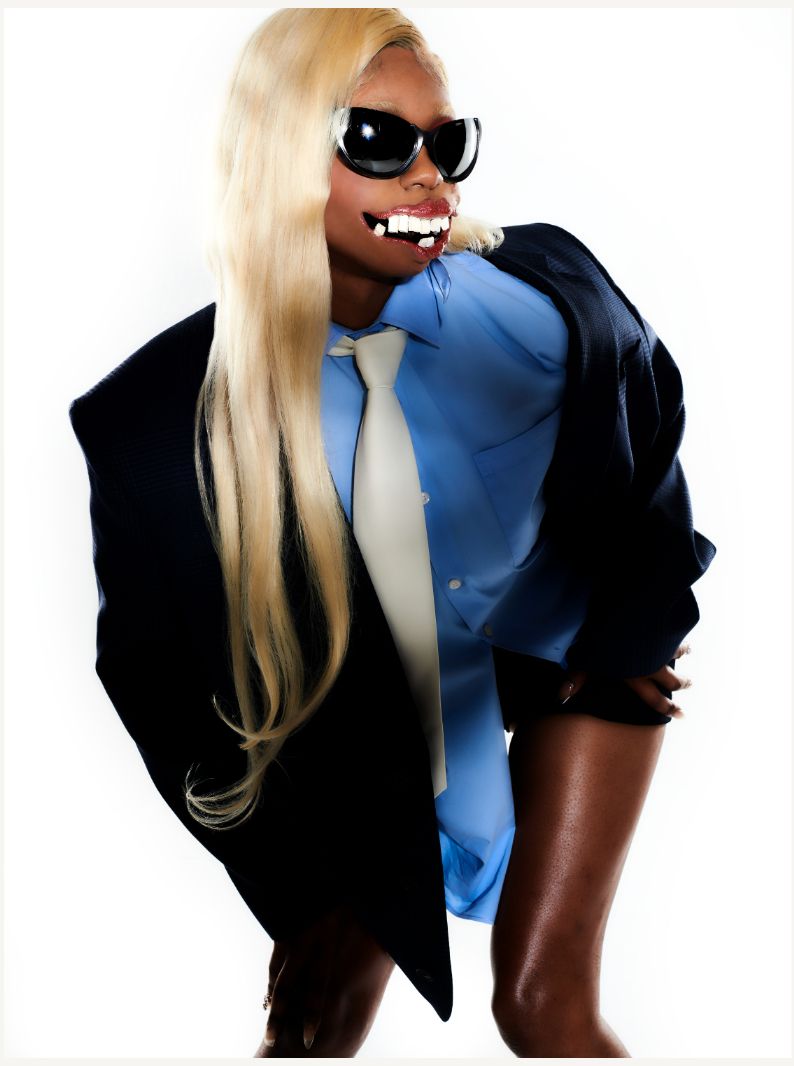
Reality TV as a Sociological Analysis: JAMES BANTONE
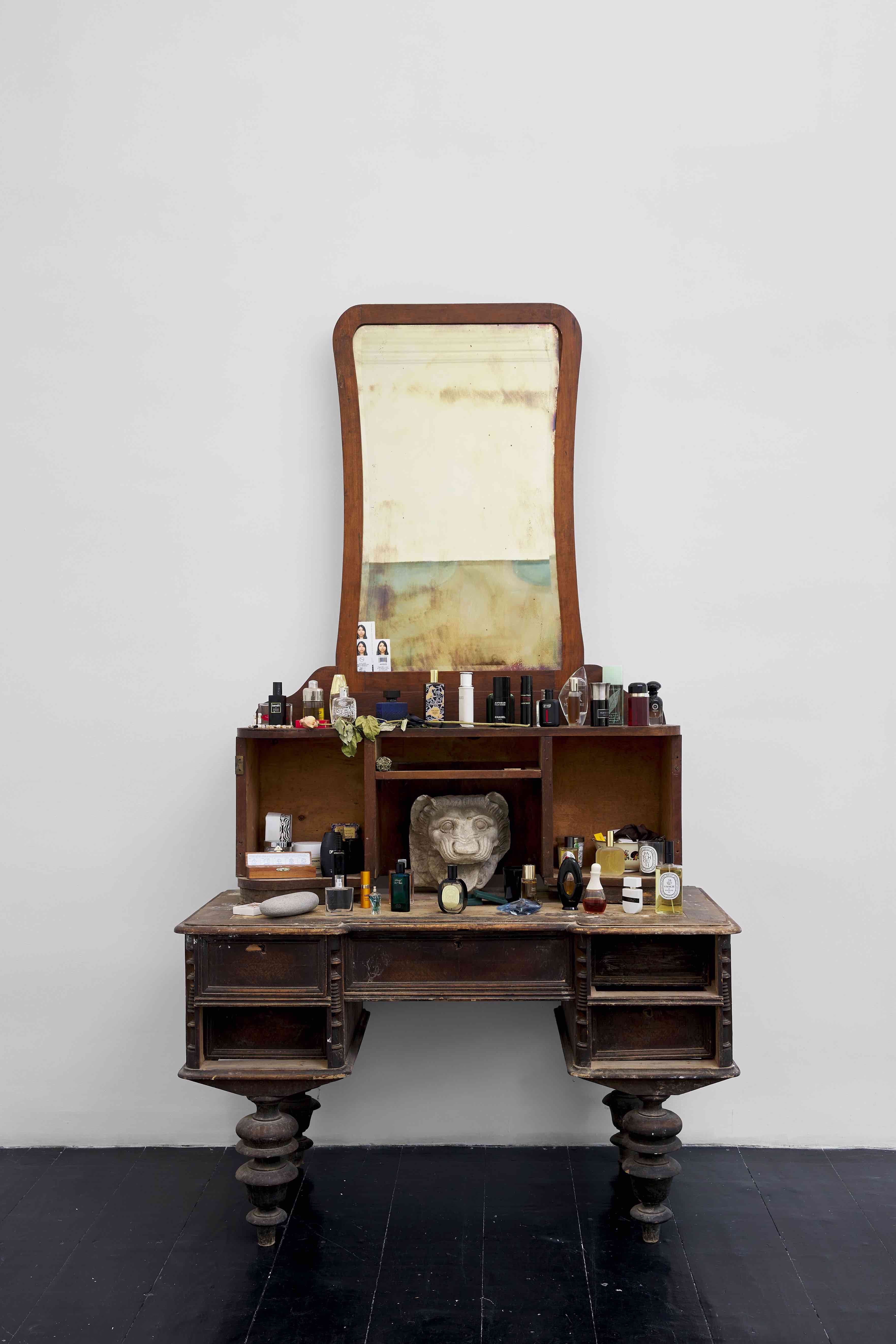
Other People: SER SERPAS
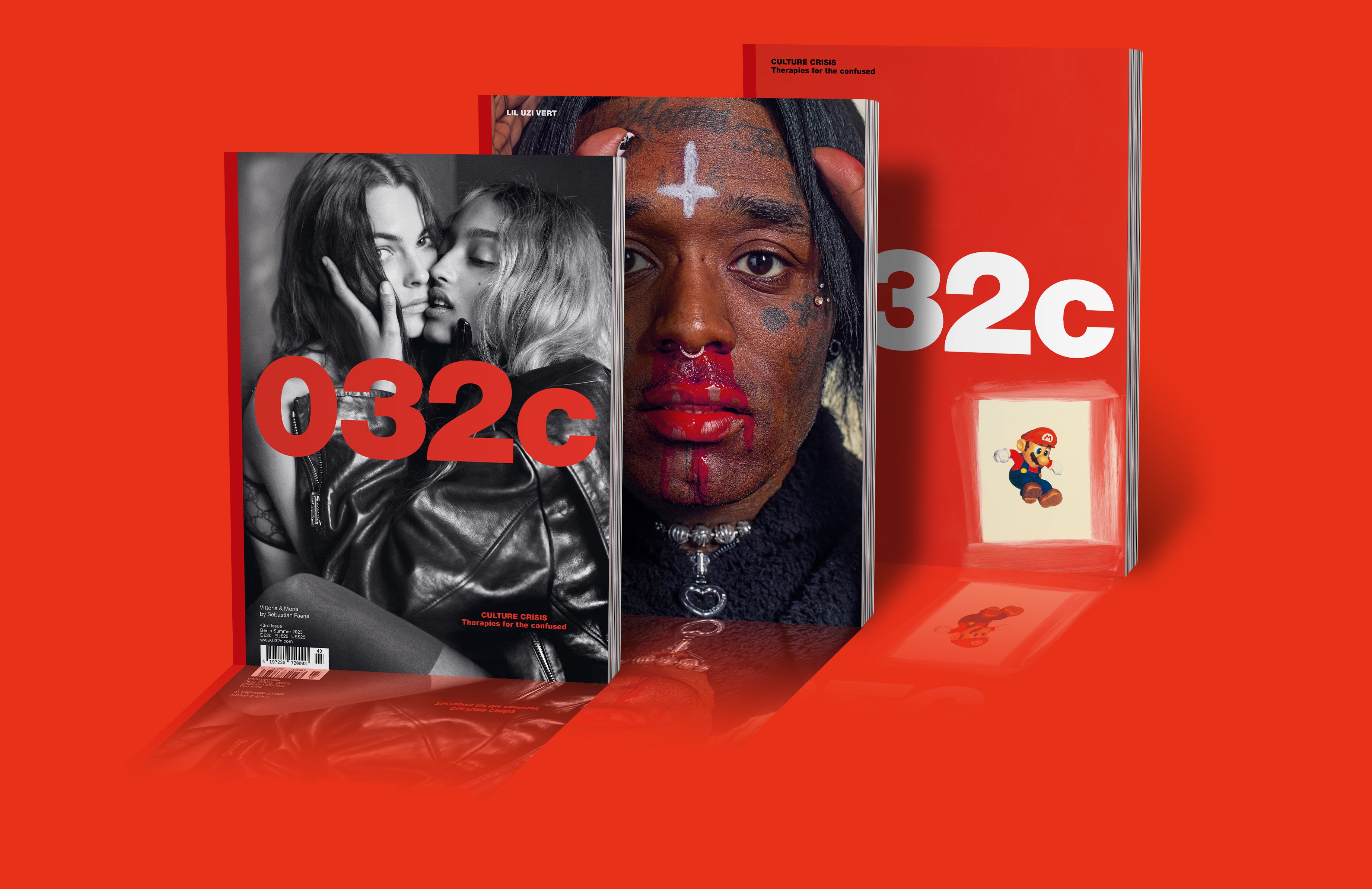
032c Issue #43 “CULTURE CRISIS. Therapies for the confused” Summer 2023
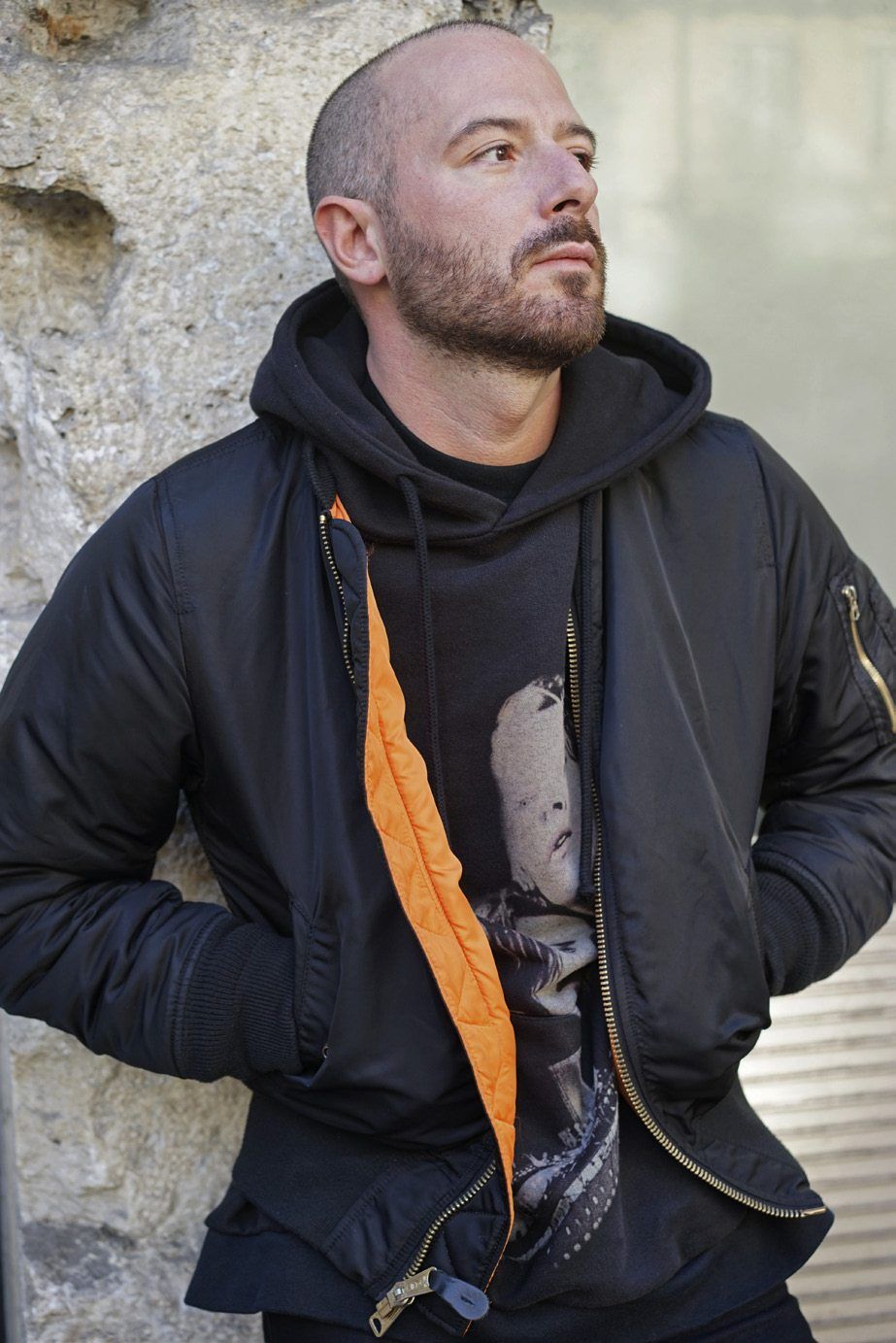
DEMNA GVASALIA on Vetements, Balenciaga, and THE SYSTEM
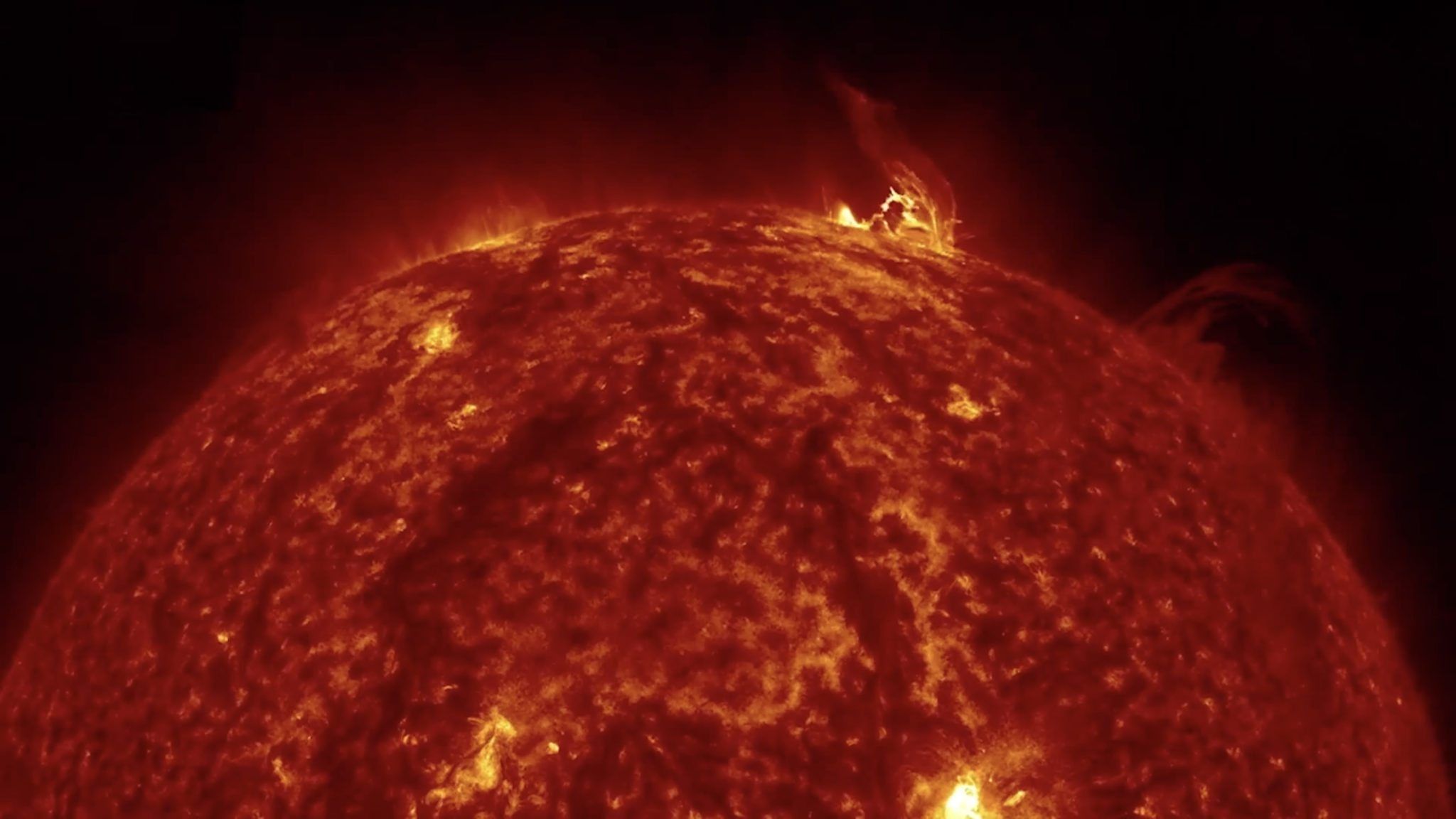
I WAS THAT ALIEN: Filmmaker ARTHUR JAFA in Conversation with HANS ULRICH OBRIST
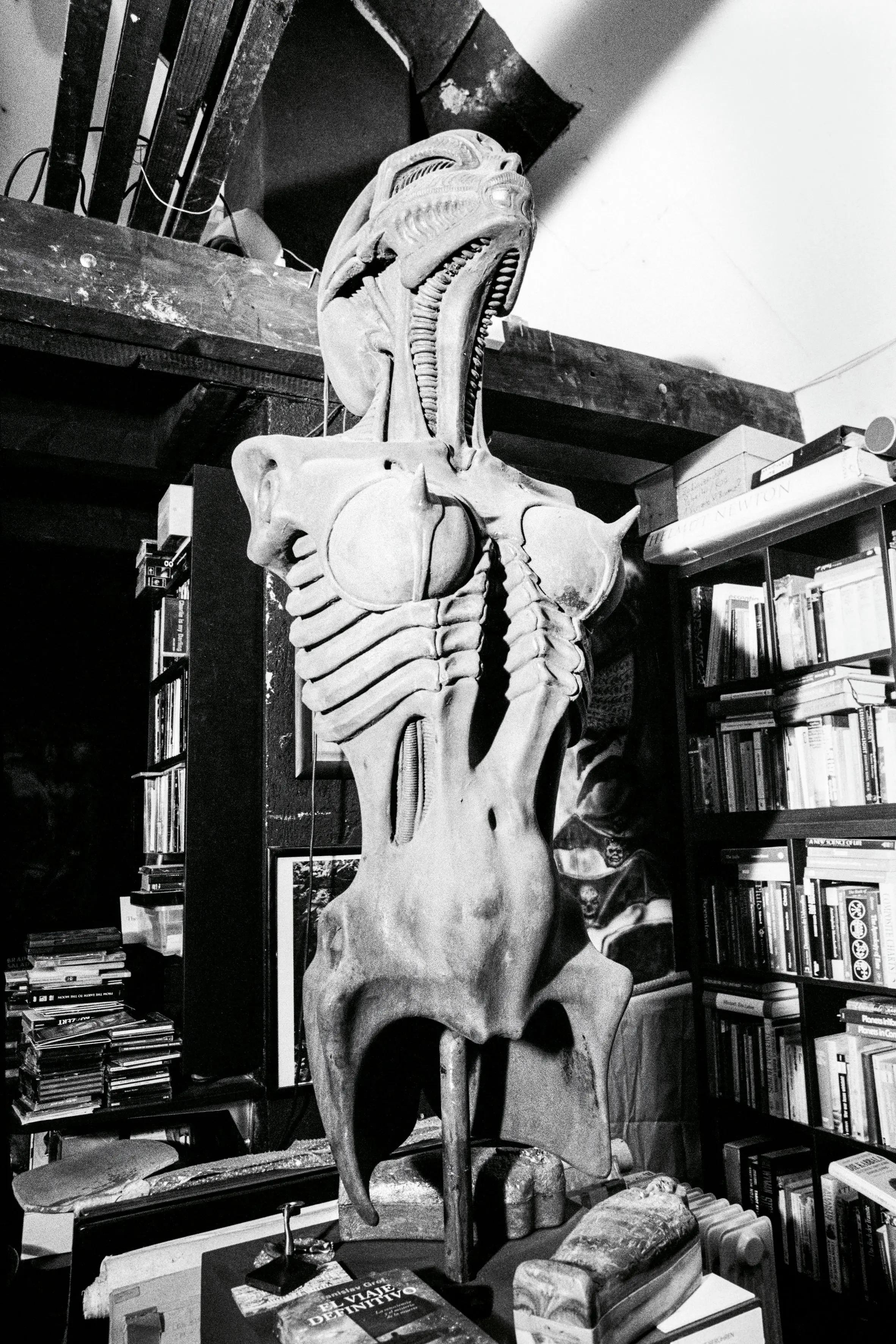
Libidinal Teratology: HR GIGER by CAMILLE VIVIER